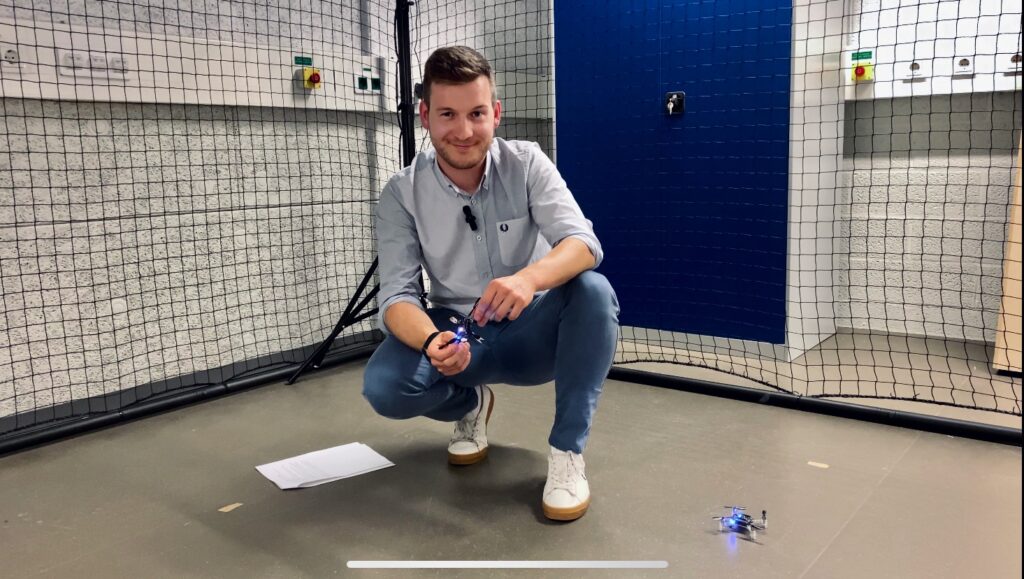December 2016
A research team at the Luxembourg Centre for Systems Biomedicine (LCSB) of the University of Luxembourg has taken an important step in modelling the complexity of the human gut’s bacterial communities – the microbiome – on the computer. The project, published in Nature Biotechnology, is an example of a study supported by multiple FNR instruments, namely AFR, ATTRACT, CORE and PoC.
Hundreds of different bacterial species live in the human gut, helping us to digest our food. The metabolic processes of these bacteria are not only tremendously important to our health – they are also tremendously complex.
The researchers gathered all known data on the metabolism of 773 bacterial strains – more than ever before. Working from this data, they developed a computer model for each bacterial strain.
AGORA – simulating metabolic processes
This collection, known as AGORA, can now be used on the computer to simulate metabolic processes taking place in the microbes and to investigate how they affect the metabolism of other microbes and that of the human host. The LCSB team published its results in the scientific journal Nature Biotechnology (DOI: 10.1038/nbt.3703) in late November 2016.
The collection of predictive metabolic models is available to researchers via http://vmh.uni.lu.
Human gut bacteria play crucial role in our health
The bacterial species living in the human gut not only help us to digest our food, but also produce valuable vitamins for us and even affect the way we metabolise drugs.
The metabolic processes of these bacteria are crucial to our health, and are highly complex: The bacteria are in constant contact with our gut cells, and the different organisms continually influence one another. Thus, they play as important a role in our health as they do in numerous diseases.
Despite many advances in science, our knowledge of these microbes is still limited.
773 different gut microbes modelled
To improve our understanding and to aid novel discoveries, the research team led by LCSB scientist Prof Dr Ines Thiele, head of the “Molecular Systems Physiology” group and FNR ATTRACT Fellow, has now created the most comprehensive collection of computational models for 773 different gut microbes, capturing their individual metabolisms, called AGORA.
“AGORA is based on a new concept for the comparative reconstruction of bacterial metabolic models. It allows the analysis of a much greater number of bacterial strains than was ever possible before. With AGORA, and by including other datasets, we can systematically study the metabolic interactions within the gut microbiome and how these interactions are influenced by external factors, including the diet and host metabolism.” – FNR ATTRACT Fellow Ines Thiele
Characterising each microbe’s metabolism
The first author of the study, Stefania Magnusdottir, is currently doing her PhD degree in Ines Thiele’s group at the LCSB: “The basis for our paper was a thorough investigation of the literature on microbial metabolism,” she explains.
“We gathered known experimental and genomic data on the metabolism of 773 bacterial strains to refine and validate the computational models. Based on this, we characterised each microbe’s metabolism and found that both their metabolic capabilities and our diet play important roles in how the microbes interact with each other. We can generate personalised microbiome models by integrating these computational models with metagenomic data, which can be obtained by sequencing the microbes present in stool samples of healthy and sick individuals.” – Stefania Magnusdottir
“With our models, we can search, in a targeted manner, for metabolic pathways that are fundamentally important to the microbiome in the gut, and we can work out what could trigger diseases when these metabolic processes go wrong. The AGORA models will now allow us to study the impact of host-microbiome interactions in specific diseases or to use them in the emerging field of personalised medicine.” – Co-author Dr Ronan Fleming, leader of the Systems Biochemistry group at the LCSB
AGORA allows for focused experiments
Using AGORA to study the gut microbiome will involve close collaboration with researchers who are investigating the gut microbiome in the laboratory, including Prof Dr Paul Wilmes, head of the LCSB Eco-Systems Biology group. His group has developed methods for studying gut bacteria under real-life conditions.
“AGORA directs us to targeted bacterial metabolic processes to perform focused experiments, allowing precise and comprehensive modelling of processes within the gut microbes,” – Paul Wilmes
For Ines Thiele, the high degree of precision is not an end in itself: “We want to understand how the microbes modulate human metabolism when we modify our diet. This may give us clues as to how we may prevent, or even treat, diseases, for example by identifying dietary supplements that could modify the interactions within a diseased gut microbiome to imitate the metabolic functions of a healthy one.”
Funding
The AGORA project has received support from the FNR’s ATTRACT, CORE, Proof-of-Concept (PoC) and AFR funding programmes, as well as from the Advanced Computing program of the US Department of Energy, Offices of Advanced Scientific Computing Research and the Biological and Environmental Research.
Download the publication ‘Generation of genome-scale metabolic reconstructions for 773 members of the human gut microbiota‘ (Nature Biotechnology)


SEE ALSO..
RELATED PROGRAMMES










